Casio GP-510 Grand Hybrid Piano
CAD 8,299.99
-
Casio’s top, flagship model just got bigger and badder. The brand new GP-510 Celviano Grand Hybrid is a further evolved version of the successful GP-500. Built-in association with the artists at C. Bechstein, touch sensitivity, as well as an improved audio system, are the most noticeably improved aspects of this model over previous ones. The end result is a hybrid piano that delivers extremely realistic audio along with a physically satisfying experience, housed in an eye-catching ebony polished cabinet. All of this while also enjoying all the availing of a contemporary digital piano.
OUT OF STOCK
Description
Product Overview
Having been a driving force in the entry and intermediate level digital piano market for 40 years, Casio has made a statement with its Celviano Grand Hybrid GP series. The advancements in this model have created a high-end offering that stands up well when compared to instruments from Kawai, Yamaha, and Roland.
Celebrating their 40th anniversary in the musical instrument business, the Casio GP-510 is an upgrade of the very successful GP500. Being Casio’s top model means the best cabinet and the most built-in sounds, along with open string and aliquot resonance, pedal noise, and 15 different ambient environments.
Casio’s Natural Grand Hammer Action consists of the same full-sized keys like a concert grand, with more improved touch sensitivity. The Berlin, Hamburg, and Vienna piano sounds, found in the AiR Grand Sound Source, now have a longer, more representative decay, which provides an authentic aural presentation.
Being an upgrade also means an improved speaker system. The built-in amplifiers make use of bigger drivers in a more powerful system than the GP500. On top of that, the new damper pedal can simulate more believable half-pedaling.
With all of this included, the GP510 is an eye and ear-catching model that will appeal to anyone looking for a top-notch hybrid piano that gives them the grand piano experience.
Action
Probably the biggest claim to fame of the GP510 is its action. Incorporating Austrian spruce in its manufacture, and utilizing the action used in C. Bechstein concert grands, the Natural Grand Hammer Action is among the most cutting-edge obtainable in digital pianos. The keys have an almost identical length to those in the concert grand, giving a more refined touch sensitivity and better control than more traditional digital pianos.
Mimicking the pathway of a hammer in an acoustic grand, the working mechanism becomes visible through a transparent panel once the lid has been opened. This offers a great insight of the mechanism in action.
Casio’s Touch Response Algorithm has undoubtedly improved the range of dynamics and sensitivity levels. The piano is more controllable at the pianissimo level, and there is a noticeable improvement in the repetition speed.
Piano Sound Engine
Casio’s Multi-dimensional Morphing has been incorporated into the GP510 sound engine; the AiR Grand Sound Source. The 256-note polyphony mimics a piano’s variation of volume and timbre over the duration of the note’s sustain; a nice nuance of this model.
One of the key features of the GP510 is the incorporation of the C. Bechstein Berlin Grand, the Hamburg Steinway Model D, and the Bosendorfer Imperial into its sound library. At nine feet long, the Bechstein D 282 is not only among the best concert pianos today, but the sampling and development of this sound were overseen by Mr. Albrecht, who is the Service Director and a Master Piano Maker at C. Bechstein, resulting in an extremely clear and colourful sound.
The Steinway Model D sample exudes radiance and power, while the Bosendorfer Imperial-based Vienna sample sounds the mellowest of all three. Apart from the grand pianos, thirty-two other sounds are also available in the GP510.
The much more powerful 100-watt speakers are skillfully incorporated into Casio’s Grand Acoustic System of the GP510. The goal of this system is to simulate an acoustic piano’s three-dimensional sound with the top speakers creating sounds that would typically rise above the piano, and the bottom speakers generating what would be heard emanating from underneath the instrument. This system of sound generation is a noticeable improvement from that of the GP500.
Connectivity
Looking at connectivity options, the GP510 includes MIDI In/Out, Line In Right and Left/Mono, Line Out Right and Left/Mono, USB Type B and USB Type A. While Bluetooth Audio is not included, and shouldn’t be a deciding factor, there are two stereo headphone jacks for privacy.
Notable Features
Let’s talk about the lid on the GP510. As you would expect, raising and lowering the lid will change the upper speaker sound, but this is complimented by the “Lid Position” in the piano’s settings. Not only does the volume change with the angle of the lid, but so does the sound’s timbre, just like with an acoustic piano. With four settings for this effect, you get to opt for the sound quality of your choice as you create the music.
- AiR Grand Sound Source tone engine
- 35 onboard sounds
- 256 note polyphony
- Acoustic Simulator Parameters: String resonance, Damper resonance, Open string resonance, Aliquot resonance, Damper noise, Pedal action noise, Key on action noise, Key off action noise, Hammer response, Lid simulator
- 88 wooden key Natural Grand Hammer Action keyboard
- Layer, split, duet, transpose, octave shift
- Effects: Hall simulator (12 types), Chorus (4 types), Brilliance, DSP, Headphone mode
- 15 built-in songs
- 15 preset ‘scenes’
- On-board audio recorder with space for 99 songs
- Metronome
Conclusion
Casio has come a very long way in its 40 years of building musical instruments, and the GP510 stands as the ultimate testament to this. A top-end hybrid piano for those seeking something special.
Casio GP-510 Owner’s Manual
Casio GP-510 Related Resources
Specs
| Keyboard | 88-key piano keyboard |
| Layer, Split | |
| Duet: Adjustable tone range (-2 to +2 octaves) | |
| Transpose: -12 semitones to 0 to +12 semitones | |
| Octave shift: 4 octaves (-2 to 0 to +2) | |
| Sound Source | Number of Tones: 35 |
| Maximum polyphony: 256 notes | |
| Touch Response: 5 sensitivity levels, Off | |
| Tuning: 415.5Hz to 440.0Hz to 465.9Hz (0.1Hz units) | |
| Temperament: Equal temperament plus 16 other types | |
| Stretch Tuning: 5 types, Off, Auto Setting | |
| Acoustic Simulator | String resonance, Damper resonance, Open string resonance, Aliquot resonance, Damper noise, Pedal action noise, Key on action noise, Key off action noise, Hammer response, Lid simulator |
| Effects | Hall simulator (12 types), Chorus (4 types), Brilliance (-3 to 0 to 3), DSP, Headphone mode |
| Concert Play | Number of Songs: 15 |
| Playback of Concert Play songs obtained with a computer, etc. | |
| Song volume: Adjustable | |
| Playback at 80% of normal tempo | |
| 2 Modes: LISTEN, PLAY | |
| Music Library | Number of Songs: 60, User Songs: 10 (Up to approximately 90KB per song, approximately 900KB for 10 songs)* |
| Based on 1KB = 1024 bytes, 1MB = 10242 bytes | |
| Song volume: Adjustable | |
| Part On/Off: L, R | |
| Grand Piano demo song | 6 |
| MIDI Recorder | Functions: Real-time recording, playback |
| Number of Songs: 1 | |
| Number of Tracks: 2 | |
| Capacity: Approximately 5,000 notes total | |
| Recorded Data Protection: Built-in flash memory | |
| MIDI Recorder Volume Level: Adjustable | |
| Audio Recorder | Real-time recording and playback to USB flash drive* |
| Linear PCM, 16bit, 44.1kHz, stereo .WAV format | |
| Songs: 99 files | |
| Approximately 25 minutes maximum recording per file. | |
| Audio Recorder Volume Level: Adjustable | |
| Metronome | Beats: 0 to 9 |
| Tempo Range: 20 to 255 | |
| Metronome Volume Level: Adjustable | |
| Scene | 15 presets; up to 10 user settings |
| Pedals | Damper (with half-pedal operation), Soft, Sostenuto |
| Other Functions | Setting backup |
| Operation Lock | |
| MIDI | 16-chanel multi-timbre receive |
| USB Flash Drive | Capacity: 32GB or less recommended |
| SMF direct playback, data storage, data loading, USB flash drive format, audio data playback and storage, scene storage | |
| Inputs/Outputs | PHONES jacks: Stereo standard jacks x 2 |
| Power: 24V DC | |
| MIDI OUT/IN terminals | |
| LINE IN R, L/MONO jacks: Standard jacks x 2/ Input impedance: 9.0kΩ, Input voltage: 200mV | |
| LINE OUT R, L/MONO jacks: Standard jacks x 2/ Output impedance: 2.3kΩ, Output voltage: 1.8V (RMS) MAX | |
| USB port: Type B | |
| USB flash drive port: Type A | |
| Pedal connector | |
| Acoustics | Amp output: 30W x 2 + 20W x 2 |
| Speakers: 16cm x 2 + (10cm + 5cm) x 2 | |
| Volume sync equalizer (3 types, Off) | |
| Power Requirements | AC Adaptor: AD-E24500LW |
| Auto Power Off: Approximately 4 hours after last operation. Auto Power Off can be disabled. | |
| Power Consumption | 38W |
| Dimensions | 143.4 (W) x 48.9 (D) x 96.3 (H) cm |
| Weight | 78.5 kg |
| Included Accessories | Music Stand, Score Book, Bench, AC Adapter (AD-E24500LW) |
| EAN code | 4971850362500 |
Additional Information
| Weight | 244 lbs |
|---|---|
| Dimensions | 23 × 62 × 29 in |
Reviews (0)
Be the first to review “Casio GP-510 Grand Hybrid Piano” Cancel reply
You must be logged in to post a review.
You may also like…
Digital Pianos
Digital Pianos
Digital Pianos
Digital Pianos
Related products
Digital Pianos
Digital Pianos
Digital Pianos
Digital Pianos
Digital Pianos
Digital Pianos
Digital Pianos
Stage Products
Digital Pianos
Digital Pianos











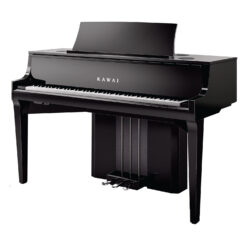

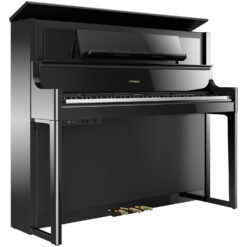




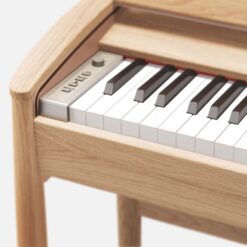



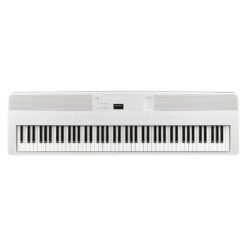
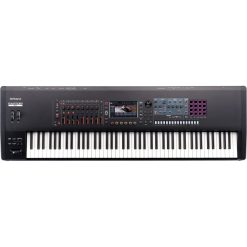
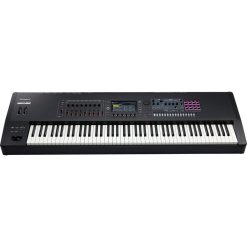

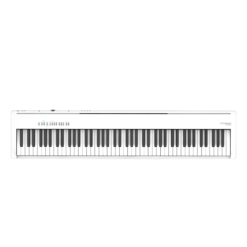
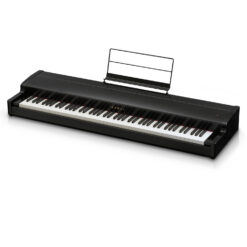
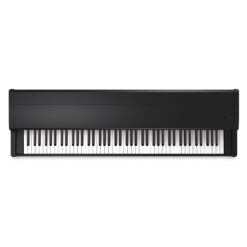


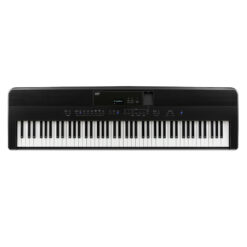





Reviews
There are no reviews yet.